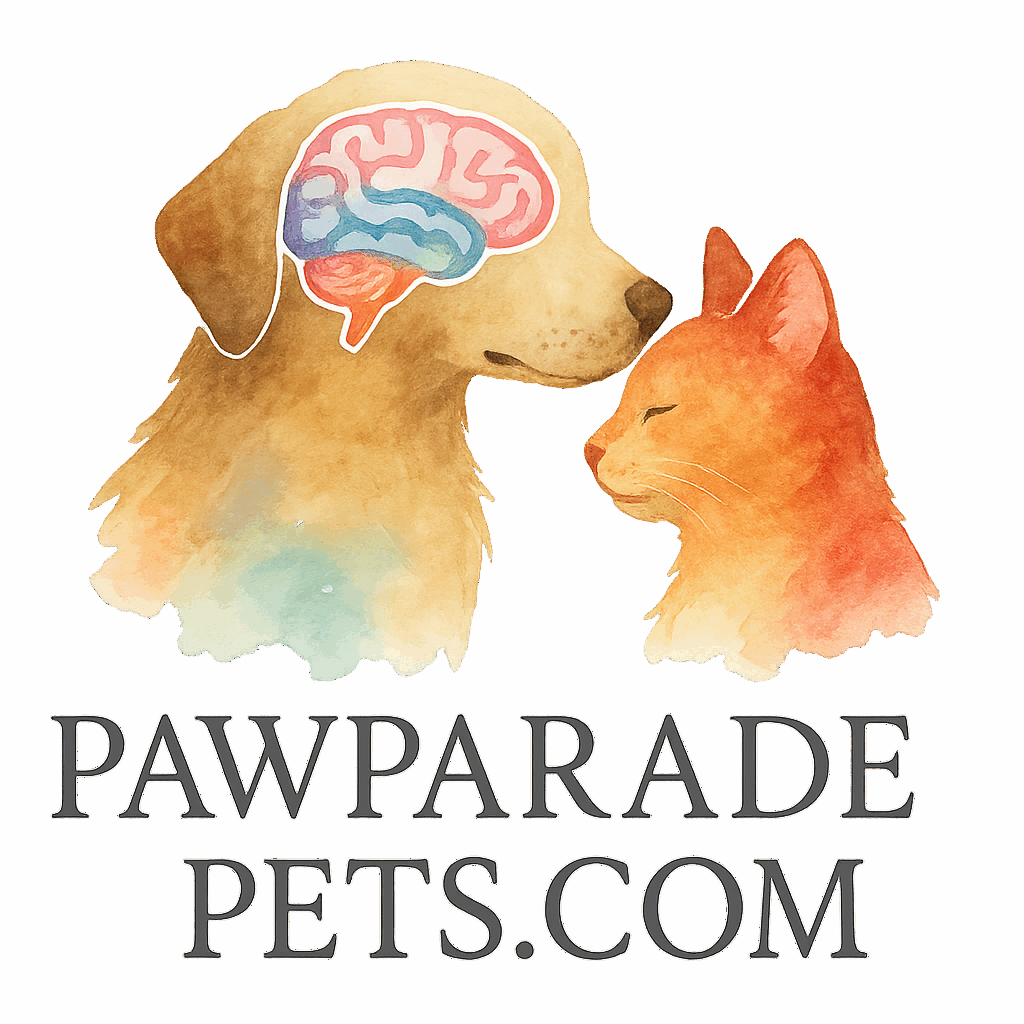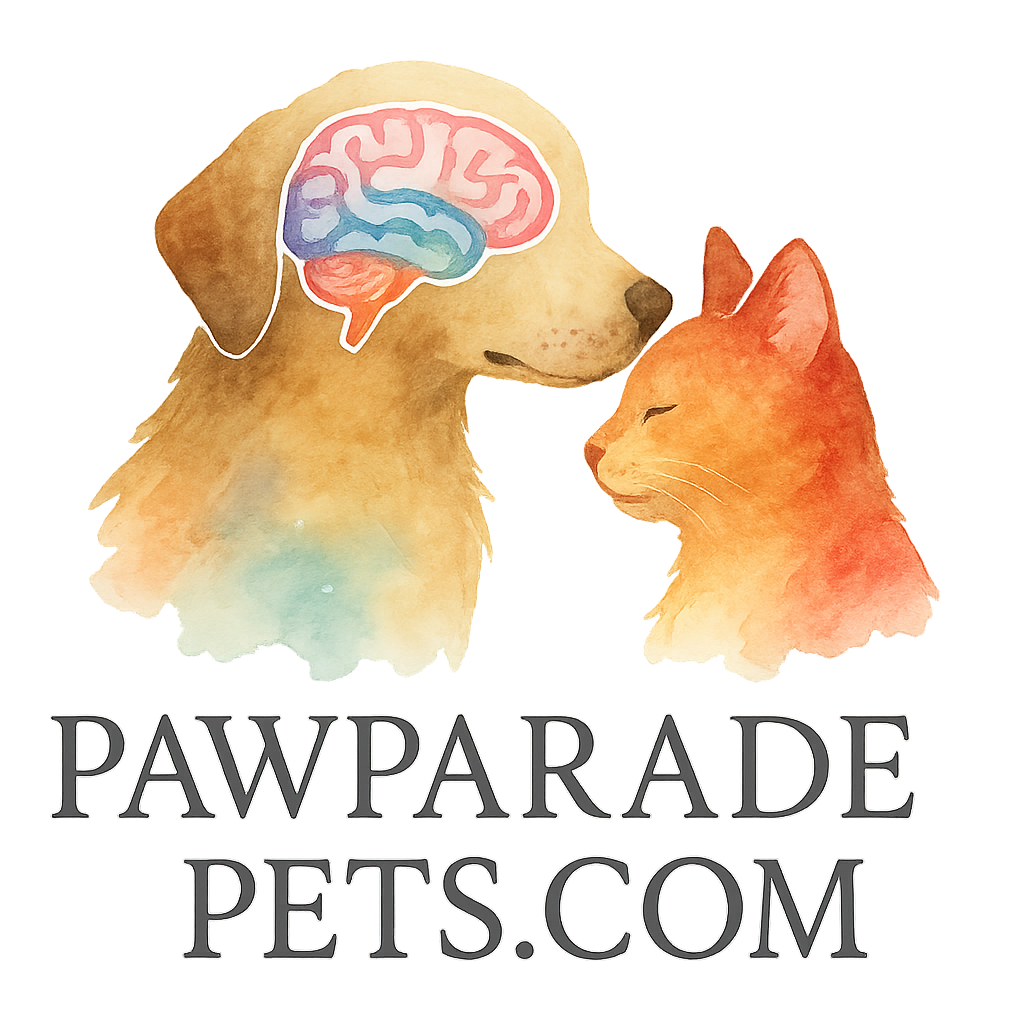Why Brain Stimulation is Crucial for Pets
Ever notice your dog getting into things they shouldn’t or your cat staring blankly at a wall for hours? That could be a sign they’re mentally bored. Just like humans, pets need mental exercise to stay sharp and happy.
The Link Between Mental and Physical Health
Keeping your pet’s brain active helps boost overall health. A well-stimulated brain reduces anxiety, curbs destructive behavior, and even extends life expectancy. A pet with mental challenges is more balanced and content.
Behavioral Benefits of Mental Engagement
Mental stimulation helps pets channel their energy into positive outlets. Instead of chewing up your shoes or digging holes, they’ll be focused on solving problems and completing tasks. Check out behavioral training tips for more on redirecting energy.
Understanding Your Pet’s Intelligence
Different Pets, Different Smarts
Every pet is unique. Dogs tend to excel in obedience and communication, while cats may shine in memory and spatial reasoning. Birds, rodents, and even reptiles display intelligence in their own quirky ways.
Signs Your Pet Needs More Mental Stimulation
Does your pet pace aimlessly, bark or meow excessively, or act out when left alone? These are signs they might need a brain boost. Boredom leads to bad behavior. Time to introduce some fun!
How Games Enhance Cognitive Function
Real Benefits of Mental Games
From memory improvement to faster problem-solving, the benefits of brain games are huge. They mimic challenges pets might face in the wild, making them more adaptable and resilient.
Choosing the Right Game for Your Pet
Not every game fits every pet. Some thrive on physical puzzles, others love scent work or commands. Explore different types at Brain Training Basics and let your pet guide you.
12 Fun Games to Stimulate Your Pets’ Brain
1. Treasure Hunt Treat Game
Hide small treats around the house or yard. Start simple, and gradually make hiding spots harder. This engages their natural foraging instinct and sharpens memory and scent skills.
2. Puzzle Feeders and Food-Dispensing Toys
Make them work for their meals! Puzzle feeders slow down eating and boost problem-solving. Try some from Tools & Toys for Brain Training.
3. Shell Game (Which Hand?)
Put a treat under one of your hands and let your pet guess. This game builds focus and teaches patience. You can also use cups or containers to step it up.

4. Hide and Seek with Toys
Hide your pet’s favorite toy and encourage them to find it. You can add verbal commands like “Find Teddy!” This game taps into scent and memory while teaching obedience.
5. Scent Trails and Tracking Challenges
Drag a treat or toy along the ground and hide it. Let your pet follow the trail. It’s a mini detective game that strengthens their sense of smell and mental focus.
6. Tug-and-Think Rope Challenges
Use tug toys but add rules. Ask them to “sit” or “wait” before engaging. This mix of physical play and obedience training keeps both brain and body engaged. Learn more with training commands and discipline.
7. Name That Toy (Command Recognition)
Teach your pet to associate words with toys. Start with two, use distinct names, and reward them when they get it right. Soon, you’ll have a pet that understands vocabulary!
8. Muffin Tin Puzzle Game
Place treats in a muffin tin and cover them with tennis balls. Your pet has to remove the balls to get the prize. It’s cheap, simple, and seriously fun.
9. Obstacle Courses
Create a course with pillows, chairs, tunnels, and hoops. Guide your pet through with commands. This builds confidence and deepens your bond through shared problem-solving.
10. Interactive Gadgets and Smart Toys
Use tech tools that react to your pet’s movement or decisions. These smart toys challenge them in dynamic ways, perfect for curious critters.
11. Mirror Play and Reaction Games
Some pets react to mirrors or even videos. Show them their reflection or a video of another pet. Their reactions can be hilarious and mentally stimulating.
12. Advanced Cognitive Challenges
Ready for the next level? Dive into Advanced Cognitive Challenges with complex puzzles, multi-step tasks, and brain games that rival escape rooms.
Tips for Making Brain Games More Effective
Keep It Fun and Positive
Never force a game. If your pet seems frustrated, take a break. Always reward with praise, treats, or affection. Brain training should feel like play, not schoolwork.
Mix It Up Regularly
Rotate activities to avoid boredom. Even the best game gets old if repeated too often. Combine games with training routines for full-spectrum stimulation.
Conclusion
Mental stimulation is just as important as physical exercise. With the right games and a little creativity, you can turn your living room into a playground for your pet’s brain. Keep things fresh, fun, and challenging, and your pet will thank you with better behavior, deeper bonding, and a happier, healthier life.
For more engaging ideas and brain-boosting fun, explore these internal links:
- Paw Parade Pets
- Games & Activities
- Brain Training Basics
- Advanced Cognitive Challenges
- Tools & Toys for Brain Training
FAQs
1. How often should I play brain games with my pet? At least 15-30 minutes a day is a great start. Adjust based on your pet’s age, breed, and energy levels.
2. Are brain games good for senior pets? Absolutely! They help keep aging brains sharp and can slow cognitive decline.
3. What if my pet doesn’t seem interested in games? Start small and keep sessions short. Use high-value rewards and try different types of games.
4. Can I use brain games for training purposes? Yes! Many brain games double as obedience training tools. Great for building good habits.
5. Do I need special toys or equipment? Not always. Many games use household items like muffin tins or towels. But check out smart toys for advanced fun.
6. What are signs a game is too difficult? If your pet gets frustrated or disinterested, it might be too hard. Simplify and gradually increase difficulty.
7. Can cats enjoy these games too? Definitely! While cats play differently than dogs, many games can be adapted for feline fun. Try scent trails or puzzle toys with catnip.


